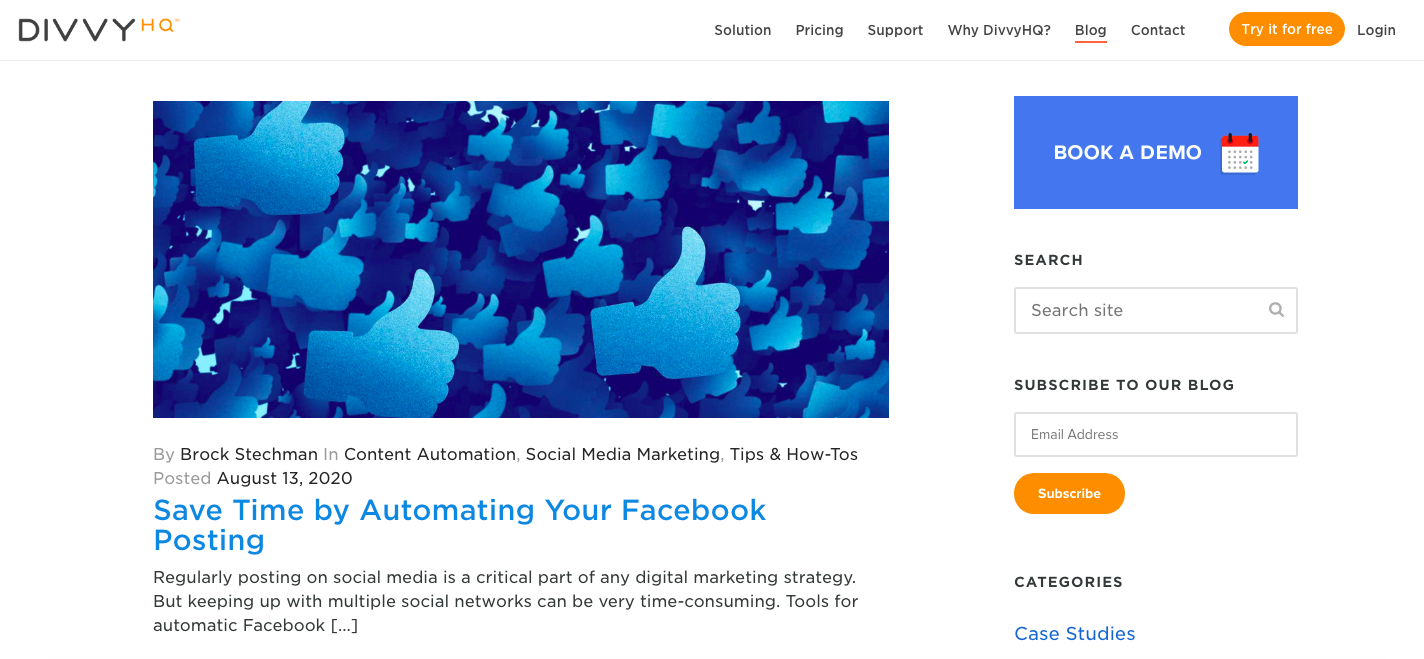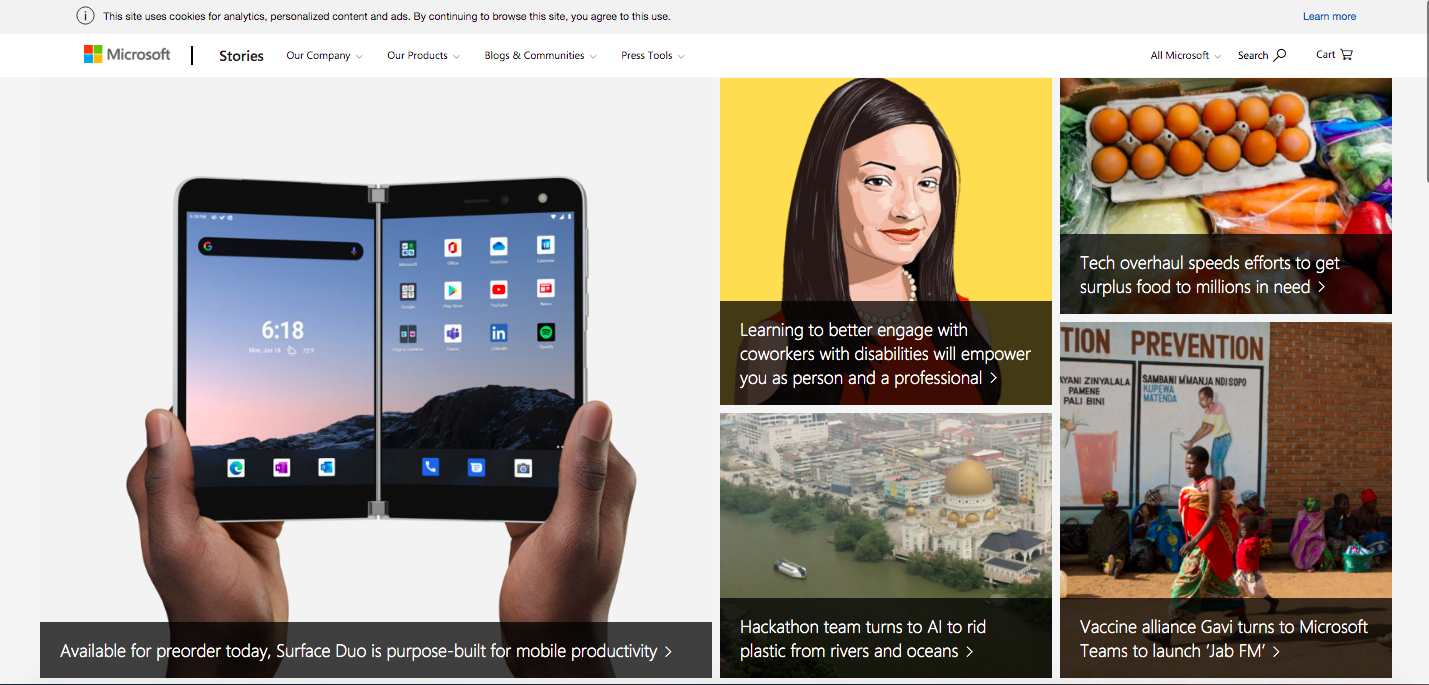
As the volume of online content grows daily, it can be difficult to make sure your voice is heard over the noise. Thought leadership content marketing is one of the most effective ways of establishing your name and company as an authority in your industry.
Thought leadership marketing means going beyond the same blog posts and regurgitated ideas that everyone seems to be publishing. By putting extra time into developing high-quality content with original ideas and opinions, you can clearly stake your position as a leader rather than a follower.
Thought leadership content can help your company to get more press exposure, attract new business opportunities, and convert leads. LinkedIn research shows that 58% of decision-makers read at least an hour of thought leadership content each week. 60% also said that this type of content had directly convinced them to buy a product or service they hadn’t previously considered.
But what exactly is thought leadership content marketing? One of the best ways to get your head around this type of content is by reading some excellent examples by other organizations.
Quick Takeaways:
- Putting some extra effort into thought leadership content can help to grow your brand and build trust with your audience.
- The best thought leadership examples build trust by focusing on delivering value to the reader not on showcasing products
- Aside from amazing digital experiences, these examples publish consistently and engage their readers at every stage of the buying journey
1. Nutanix The Forecast

The enterprise cloud services market is extremely crowded, so it’s important for providers to differentiate themselves from the competition.
Cloud computing firm Nutanix firmly establishes its position as an industry leader with its online magazine, The Forecast.
The Forecast publishes industry news and ideas about the people, trends, and technologies that are shaping the cloud computing industry.
The content on The Forecast is organized into categories including:
- Technology (news and stories on cloud technology, hybrid IT, infrastructure, and data management)
- Business (discussion and guides on management, digital transformation, and leadership)
- Industry (trends and stories of how real companies are using cloud technology)
- Profile (biographies and interviews with key individuals from the Nutanix global team)
As well as written content, there’s a separate section for videos and a podcast exploring some of the ideas discussed in articles in a conversational audio format.
Going beyond the bland technical content so many IT brands publish, Nutanix has been successful in publishing original and innovative content that’s appealing to a wide range of audiences, despite being a very narrow niche.
2. First Round Review

Venture capital firm First Round Capital launched its blog, First Round Review, with the aim of sharing their extensive pool of knowledge and experience with technology entrepreneurs.
The company takes a different approach to other venture capital firms. Rather than collecting a portfolio of companies, they see themselves as building a community of entrepreneurs.
First Round Review reflects this approach by sharing ideas, best practices, and advice from the community to help technology entrepreneurs can learn to build better companies.
By focusing on interviews, advice, and real experiences from real companies, First Round has experienced a hugely positive response to their blog including a massive increase in visitors, thousands of shares, and press attention from publications including Forbes, The Atlantic, and Fast Company.
I have to personally thank the First Round Review for helping me educate dozens of startup founders on what content marketing really is and why it’s beneficial to them.
3. Autodesk’s Redshift

Software company Autodesk named their blog after a scientific phenomenon relating to objects traveling through space. As the universe continues to move and expand, the editorial team at Redshift also aims to continually move forward and evolve, to stay at the forefront of architecture, construction, infrastructure, manufacturing technology, and sustainability.
Autodesk’s previous blog, Line//Shape//Space, won numerous awards for its content but grew beyond its original audience of small businesses.
As the Autodesk content team recognized the need to evolve and engage with businesses of all sizes, Redshift was born.
Redshift’s focus is the future of making things, with content covering trends and predictions in the latest technologies including machine learning, generative design, and robotics.
As well as targeting a wider audience, Autodesk also wanted to personalize the content experience for each reader. Visitors can register to the site to follow particular authors and content categories, and bookmark articles to read later. An AI algorithm also automatically serves up suggested content based on previous interactions with the site.
Autodesk also features several members of its senior executive team as Redshift authors in their “Inside My Design Mind” series. By securing buy-in from the executive team as influential “content marketing champions”, the content team has successfully implemented an employee advocacy program and is reaping the rewards from this approach.
4. American Express Business Class

American Express sorts the content on its Business Class Trends and Insights blog into four main categories: Managing Money, Getting Customers, Building Your Team, and Planning for Growth.
Within these content silos are several other sub-categories including topics such as leadership, productivity, company culture, strategy, cash flow, and marketing & sales.
Previously known as OPEN Forum, Amex’s blog for small businesses remains one of the oldest and most successful examples of content marketing. Rather than using content to drive sales directly, American Express decided to put its audience first by providing actionable tips, insights, and inspiration to help businesses adapt and succeed.
Rather than relying on their own team of writers, American Express outsourced to a content marketing agency like ours for stories, experiences, and advice. This relationship lends a real community feel to the Business Insights blog, as well as increasing exposure for those who contribute.
As well as written content, Business Class recently started a live video series, “Office Hours”, hosted on Instagram and YouTube. In this series, founders and executives of small businesses were invited to a Q&A session to discuss their experiences navigating the COVID-19 crisis.
5. Intermedia Cloud Communications Blog

Cloud business applications provider Intermedia uses their blog to share news, security advice, and case studies of businesses successfully deploying cloud technology to improve performance.
By focusing their efforts on topical and trending topics, the Intermedia content team has been successful in publishing articles that their audience wants to read and share.
Content such as “New Study Finds More Than Half of U.S. SMB Owners Believe Working Remotely is Here to Stay Post-Pandemic” and “How to Manage Live Attendee Chat During Webinars” tapped into the interests and concerns of business owners and executives during the COVID-19 crisis.
Meanwhile, detailed interviews and case studies following their customers’ move to cloud services demonstrate the real-life applications of Intermedia’s products and services.
6. DivvyHQ Blog

It’s important for content marketing platform DivvyHQ to practice what they preach and demonstrate best practices in content marketing.
The DivvyHQ blog shares actionable tips, advice, and strategy for content marketing at an enterprise level, as well as sharing case studies from some of their most successful customers.
The DivvyHQ content management platform offers powerful tools for content automation and streamlining workflow but not everyone is aware these tools exist or know how to get the most out of them. By publishing helpful content on how to automate content marketing, systematize content management, and develop a better content strategy, DivvyHQ educates its audience while showcasing its own product at the same time.
7. Microsoft “Stories”

Storytelling is one of the cornerstones of successful content marketing. It’s also a tool used by some of the world’s greatest leaders and visionaries. Microsoft realized this when they decided to call their blog and news page “Stories”.
Stories publishes news on the latest Microsoft products, events, and initiatives that give a wider context to the brand beyond its core suite of products.
For example, recent stories published on the blog cover a collaboration with an environmental charity to clear plastic from oceans and rivers, a look into how software developers are helping companies pivot during the coronavirus pandemic, and insight into how people with disabilities are using accessible technology to achieve more.
A sub-publication of stories, Story Labs, hosts the blog’s long-form content with a deeper dive into topics such as accessibility, sustainability, and the future of technology.
Story Labs also features employee profiles and stories, demonstrating the wealth of talent and expertise behind the various branches of the global Microsoft brand.
8. Grow by Acorns and CNBC

Financial services is one area where people really need advice from experts who know what they’re talking about.
Micro-investment app Acorns understands this, and so set out to build a personal finance and investment blog, Grow, that’s highly authoritative as well as being educational and entertaining.
To do this, they partnered with trusted news provider CNBC and built a team of money experts with the knowledge and experience to deliver accessible educational content on how people can make the most of their money, whatever their financial position.
Only a small section of the blog is dedicated to investment. By publishing content on other financial topics such as saving, getting out of debt, and increasing income, they’re providing massive value to their audience and building trust and authority at the same time.
9. Optimizely Insights

Digital Experience Platform provider Optimizely built its Insights platform with the main goal of educating their customer to “Know More.” and “Do More.”
I personally love the visibility and clarity of their mission statement and the customer-centric focus on adding value.
With an engaged community that runs deep, Optimizely strives to show how their insights run deeper. They help their audince understand how some of the best brands in the world use experimentation to create world-class digital customer experiences.
Formerly known as Episerver, Optimizely is a leading CMS, Personalization and testing engine, a Customer Data Platform and with their latest acquisition of content management platform Welcome Software – all about optimizing digital experiences.
10. Zen Desk’s Relate

When it comes to providing great customer service, technology can only go so far. Customer service software company realized it could help its customers get more out of its product by providing advice and ideas for creating great customer experiences.
The Relate blog covers topics such as empathetic product design, living and working online, building relationships with others, and becoming a better company.
Zendesk wants their audience to get something out of their content – even if they don’t ever intend to become a customer – and it shows. Every article contains useful information without pushy sales messages.
Want to Join these Content Marketing Success Stories?
Need more ideas and inspiration? Check out my list of the best content marketing examples for dozens of other blogs that are killing it with content.
If you are ready to get more traffic to your site with quality content published consistently, check out our Content Builder Service.
Set up a quick consultation, and I’ll send you a free PDF version of my books. Get started today – and generate more traffic and leads for your business.
The post 10 Amazing Examples of Thought Leadership Content Marketing appeared first on Marketing Insider Group.
0 Commentaires